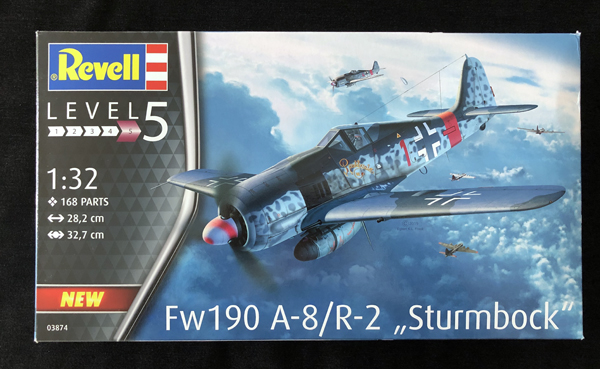
Kit Ref: 03874
In-box review with Geoff Coughlin (June 2019)

Our thanks to Revell for supplying our review sample. Revell model kits are available from all good toy and model retailers. For details visit Revell
Here’s my video review
Here’s my summary
SMN Quick summary Star rating out of 5
Here are some photos of the manufacturer’s completed model
GALLERY GRID
Would you like to see a full build article on the Revell 1:32 Focke-Wulf Fw190F-8 that forms the basis of this release from Revell? Dave C did a great job as you can see…
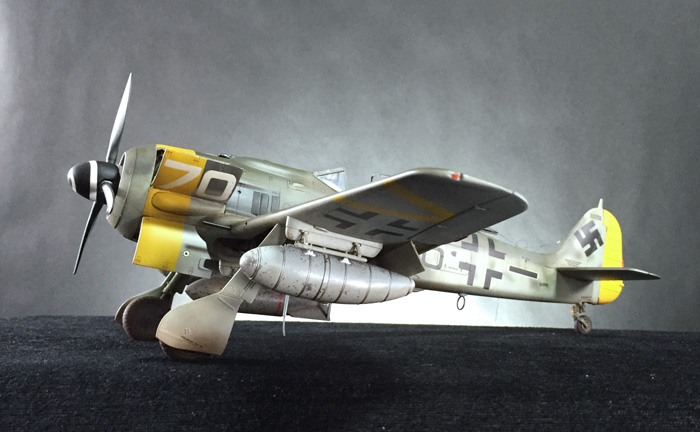
I also did an in-box review of the earlier F-8 release on which this kit is based and you can see that here.
A little bit of background to the Focke-Wulf Fw190
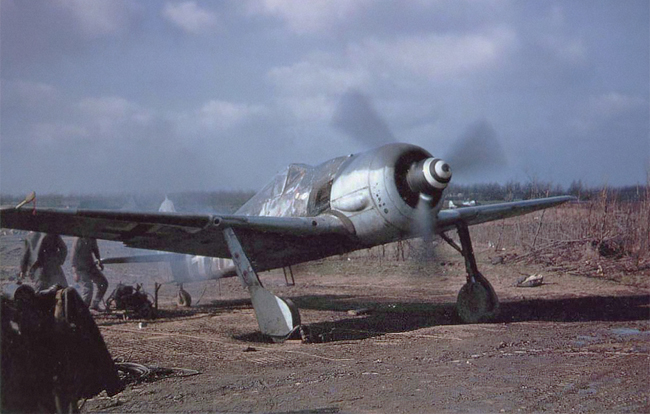
The Focke-Wulf Fw 190 Würger (English: Shrike) is a German single-seat, single-engine fighter aircraft designed by Kurt Tank in the late 1930s and widely used during World War II. Along with its well-known counterpart, the Messerschmitt Bf 109, the Fw 190 became the backbone of the Luftwaffe’s Jagdwaffe (Fighter Force). The twin-row BMW 801 radial engine that powered most operational versions enabled the Fw 190 to lift larger loads than the Bf 109, allowing its use as a day fighter, fighter-bomber, ground-attack aircraft and, to a lesser degree, night fighter.
The Fw 190A started flying operationally over France in August 1941, and quickly proved superior in all but turn radius to the Royal Air Force’s main front-line fighter, the Spitfire Mk. V, particularly at low and medium altitudes. The 190 maintained superiority over Allied fighters until the introduction of the improved Spitfire Mk. IX.In November/December 1942, the Fw 190 made its air combat debut on the Eastern Front, finding much success in fighter wings and specialised ground attack units called Schlachtgeschwader (Battle Wings or Strike Wings) from October 1943 onwards.
The Fw 190A series’ performance decreased at high altitudes (usually 6,000 m (20,000 ft) and above), which reduced its effectiveness as a high-altitude interceptor. From the Fw 190’s inception, there had been ongoing efforts to address this with a turbo supercharged BMW 801 in the B model, the much longer-nosed C model with efforts to also turbocharge its chosen Daimler-Benz DB 603 inverted V12 power plant, and the similarly long-nosed D model with the Junkers Jumo 213. Problems with the turbocharger installations on the -B and -C subtypes meant only the D model entered service, in September 1944. While these “long nose” versions gave the Germans parity with Allied opponents, they arrived too late to affect the outcome of the war.
The Fw 190 was well-liked by its pilots. Some of the Luftwaffe’s most successful fighter aces claimed many of their kills while flying it, including Otto Kittel, Walter Nowotny and Erich Rudorffer. The Fw 190 provided greater firepower than the Bf 109 and, at low to medium altitude, superior manoeuvrability, in the opinion of German pilots who flew both fighters. It was regarded as one of the best fighter planes of World War II.
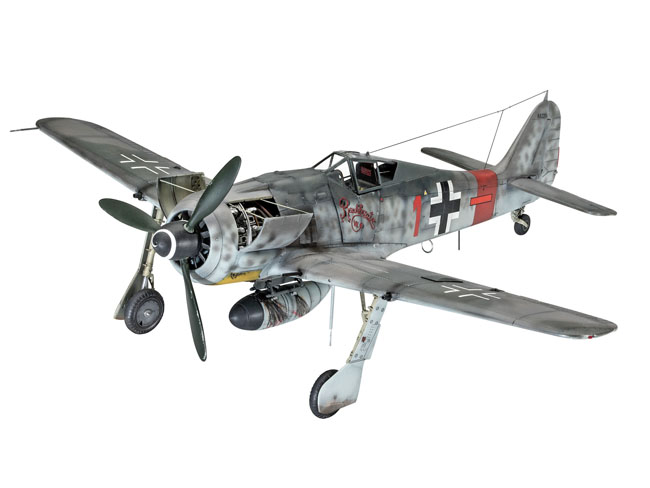
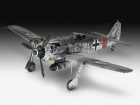
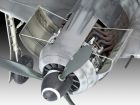
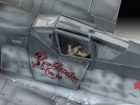
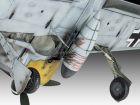
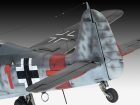
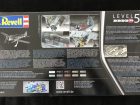
Ask a question or add feedback:
You must be logged in to post a comment.